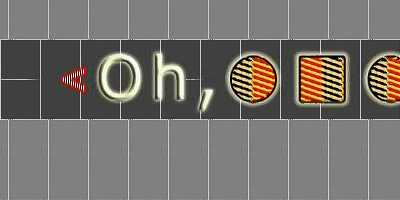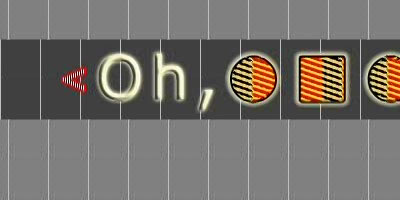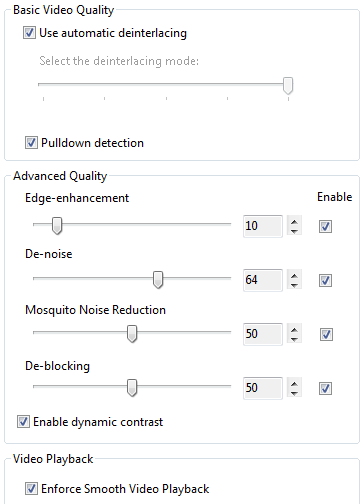AMD's Radeon HD 6450: UVD3 Meets The HTPC
by Ryan Smith on April 7, 2011 12:01 AM ESTThe Perfect HTPC Card? Probably
While AMD primarily targets cards like the 6450 at the budget upgrade market when it comes to retail, our preferred focus is on technical situations where such a card makes sense rather than economic situations. So with the 6450, 5450, GT 430, and other cards, usefulness in an HTPC environment is of great interest to us.
iGPUs have made some strides in the last six months in completely capturing the HTPC space, but usually they come up short in some form or another. This usually manifests itself as limited post-processing options due to a lack of shaders, and in the case of Sandy Bridge, the lack of a 23.976fps mode. iGPUs are still making strides and it’s possible we’ll see something capable of practical perfection as early as this summer with Llano, but for now you need a dGPU to achieve best results.
The last time we took a look at the HTPC market for a dGPU was with NVIDIA’s GT 430 in October. At that time it was the first low-end GPU with HDMI 1.4a and Blu-ray 3D capabilities, giving it an edge over AMD’s lineup at the cost of not supporting cadence detection for some more unusual patterns. The best AMD card for HTPC use at that time was the 5570, as the 5450 lacked the memory bandwidth and shader capacity necessary to make use of AMD’s full suite of post-processing features.
Due to how little time we’ve had with the 6450 we haven’t been able to run it through our full suite of HTPC tests, but so far it’s looking very good. Between the doubling of memory bandwidth and doubling of shaders, the 6450 is now able to run all of AMD’s post-processing features at full speed—that is they all work with Enforce Smooth Video Playback enabled and without dropping any frames in the process. AMD reports an HD HQV 2.0 score of 188, while we recorded 189 on the 5570 last year (keep in mind scoring is inherently subjective to some degree). We need to do further testing, but with our limited time it looks like the 6450 is as equally capable as the 5570 when it comes to post-processing, which is to say it’s at the top of the charts.

AMD Radeon HD 6450, Cheese Slices Test

AMD Radeon HD 5570, Cheese Slices Test
The post-processing capabilities along with the ability to decode and transmit 3D content are what have us so excited about the 6450 as an HTPC card. Although 3D content hasn’t made much progress in the last six months, for HTPC purposes at a bare minimum we’re looking at a 5570 replacement with a bit over half the power consumption and modern display outputs. That alone is quite enticing.

CCC Default Image Quality Settings










47 Comments
View All Comments
ET - Thursday, April 7, 2011 - link
If you're worried about crossing the 25W line you can always slightly underclock it. That said, unless you intend to use it for gaming, folding or another such heavy task, it shouldn't come close to 25W, and from your description above it sounds like you're not planning such things.DjPete2008 - Friday, April 8, 2011 - link
According to this - http://www.rage3d.com/reviews/video/amd_hd6450_lau... - the idle power draw is actually less than the 5450.So it would probably be compatible with my system, and as ET said, I could also underclock it. Now to wait and see what retail products get released.
Wave_Fusion - Thursday, April 7, 2011 - link
Since the Turks architecture is what my 6770M is based on, I'm looking forward to see how the desktop versions do. It might not be as impressive in the desktop world, but as mobility cards go its not far from the top.evolucion8 - Thursday, April 7, 2011 - link
It is a good review, but I think that it might be more productive doing video quality analysis instead of gaming performance as no one will buy such low end card for gaming anyways. Or at least two or three gaming performance charts and the rest with video quality and performance analysis, good product overall, but in terms of gaming performance, I think that the GT 430 is a better option.Mishera - Friday, April 8, 2011 - link
I second that.I've been thinking about building a htpc using Amd's e-350, and was wondering if something like this would be useful from a feature/video quality perspective, or if the apu would be adequate on it's own.
ET - Friday, April 8, 2011 - link
I always find gaming potential interesting, but I think that 1680x1050 maximum quality with 4x AA isn't. I don't really need putting this in the perspective of all the other cards just to show it's not good for that. I want to know what it does work for. 720p would be a good testing point for an HTPC. 1280x1024 and 1024x768 aren't really in use these days.It might be a good idea for Anandtech to develop a low end gaming benchmark, with game and setting selections which are more useful to indicate the suitability of such low end hardware for some gaming. I know Jarred is working on a low end gaming article, but I'd love this to be put into standard reviews of such hardware.
7Enigma - Friday, April 8, 2011 - link
The majority of non-gamers (those that would probably buy this card not for HTPC), are on 17-19" monitors (ie those that come with the Dell/HP) computer and so I would argue that the 1280X1024 is likely the MOST important resolution to test.Still I agree with the above poster that the game tests are more of a formality and the focus should be on the video quality and performance analysis (specifically power draw doing common HTPC tasks not a load benchmark with crysis).
strikeback03 - Friday, April 8, 2011 - link
Unless that Dell/HP is pre-2005, it is probably not not 1280x1024. The various widescreen resolutions with between 768 and 900 pixels of vertical resolution have been more common for quite a while at those screen sizes.ET - Thursday, April 7, 2011 - link
Low end Llano chips will have 160 cores, but slower and with slower memory. That'd put it around HD 3000 or even under (and sometimes higher), but still over HD 2000.silverblue - Friday, April 8, 2011 - link
Tough call. Llano will have access to a dual channel memory bus of up to DDR3-1866 which theoretically should provide more bandwidth than the 6450, although it will have to share this with the rest of the system. Even so, this should still be plenty enough to beat HD 3000 regardless of what Llano model is in use, assuming the fastest memory is used.I believe Llano's true strength will be 720p with AA; even with 400 shader cores it's not going to be a monster and certainly won't be suited for 1080 gaming. Hell, I wouldn't even put my 4830 through that. One thing we really don't know right now is how many texture units and ROPs Llano actually possesses.